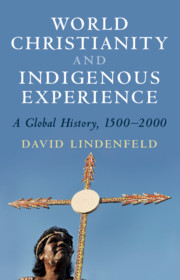Book contents
- World Christianity and Indigenous Experience
- World Christianity and Indigenous Experience
- Copyright page
- Contents
- Maps and Illustrations
- Tables
- Acknowledgments
- 1 Introduction
- 2 Colonial Latin America
- 3 Native North America
- 4 Sub-Saharan Africa and the Diaspora
- 5 The Middle East
- 6 India
- 7 East Asia
- 8 The Pacific
- Conclusion: Reflections on Concentrated and Diffuse Spirituality
- Endnotes
- General Bibliography
- Index
5 - The Middle East
Published online by Cambridge University Press: 30 April 2021
- World Christianity and Indigenous Experience
- World Christianity and Indigenous Experience
- Copyright page
- Contents
- Maps and Illustrations
- Tables
- Acknowledgments
- 1 Introduction
- 2 Colonial Latin America
- 3 Native North America
- 4 Sub-Saharan Africa and the Diaspora
- 5 The Middle East
- 6 India
- 7 East Asia
- 8 The Pacific
- Conclusion: Reflections on Concentrated and Diffuse Spirituality
- Endnotes
- General Bibliography
- Index
Summary
It is generally acknowledged that Hinduism, as the name of a distinct religion, did not exist before the nineteenth century. Before that, “Hindu” had simply meant “Indian” and encompassed a variety of beliefs and practices (diffuse spirituality). There were also indigenous “Thomas Christians” dating fromthe 1st century CE. When missionaries arrived, lower caste groups found Christianity attractive. A sea-change occurred around the nineteenth century when Westerners found “Hinduism” to be incurably superstitious. Indians responded by reforming their practices (towards concentrated spirituality). Christianity continued to appeal to marginalized groups such as women, untouchables, and aboriginal ethnic groups. Hindu nationalists continue to view Christianity with suspicion.
Keywords
- Type
- Chapter
- Information
- World Christianity and Indigenous ExperienceA Global History, 1500–2000, pp. 142 - 177Publisher: Cambridge University PressPrint publication year: 2021

